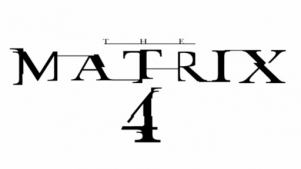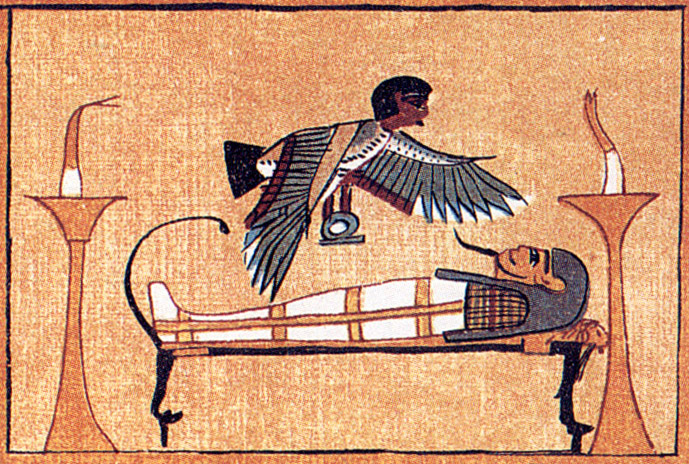Matrix 4 Film Review
Article By Pierre Poulain
 The Movie The Matrix, released in 1999, and its two sequels (Reloaded and Revolutions), released in 2003, have together been an international phenomena. The first movie in particular, was known as a modern version of Plato’s Myth of the Cave, and the two subsequent parts are of the same universe – the real world and the cave – although further away from Plato’s text.
The Movie The Matrix, released in 1999, and its two sequels (Reloaded and Revolutions), released in 2003, have together been an international phenomena. The first movie in particular, was known as a modern version of Plato’s Myth of the Cave, and the two subsequent parts are of the same universe – the real world and the cave – although further away from Plato’s text.
When The Matrix Revolutions was released, it seemed that the dice were rolled. A cycle was complete, and the sun was rising on a world where the cards had been dealt and the rules had apparently changed.
But 18 years later, Matrix Resurrections is out. It is difficult to categorize the movie simply: Although it is a remake of the first movie, with references to the next two, it is also a different film, which is not a sequel, nor a copy.
One thing is for sure: We have not finished commenting on this 4th opus. Nothing in it is filmed by chance; not the plot, nor any dialog. Everything is a pretext to be analysed and deepened, and surpasses the claims and possibilities of this short article. I will only deal with a few subjectively chosen concepts, leaving aside a considerable number of themes such as the story of Neo and Trinity, as a remake of Orpheus and Eurydice, and the role of Merovingian, as the key maker (and the doors that he opens), among others.
Historical Cycles and The Improvement of Forms
The Matrix 4 shows us that History – The Great History –repeats itself, by recovering and improving the forms of previous cycles. The Matrix in this last movie still has the same essence. It starts and ends almost like the first opus: it has the same opening sequence and practically the same finale, with Neo – accompanied by Trinity – flying towards the sky. The plot is also basically identical: Neo looks for Morpheus, Alice’s White Rabbit, he is once again initiated into Martial Arts in a virtual program, etc. Everything is the same and yet so different. Apart from Neo and Trinity, the main characters have changed forms: Smith, Morpheus and even the Architect has evolved to become the Analyst.
Philosophy of History teaches us that History is not linear, but is cyclical. Time is cyclical. From a heartbeat to the advent and collapse of a civilization, the cycles continue and repeat. But their expression, their forms change. The days will always have 24 hours, but the sun does not shine equally on all.
Myths essentially remain unchanged. And the Matrix recounts the myth about the History of the awakening of human consciousness, which is needed to add to our capacity to learn from our past experiences, and integrate those experiences to improve the forms that will serve in future cycles.
Thus, the protagonists of the new Matrix are in a way improved versions of the characters from the first opus. In the day to day, we face the same trial: To learn from our experiences, improve ourselves… or to repeat the same mistakes.
The Choice: The one that depends on us and the one that is an Illusion
When Neo has to choose between the blue pill (to refuse to wake up and to accept the illusion of the Matrix as reality) and the red pill (to wake up in the real world), Morpheus tells him that the choice is an illusion, and that Neo already knows what he will choose.
It is for each of us to be loyal to what in the Indian tradition is called Swadharma.
Dharma is the Law, timeless and immutable. Swadharma is the “Law of each individual”, meaning our essence, our raison d’être, our personal line of evolution. In the context of the theory of reincarnation, Swadharma is the axis along which we evolve. It is our choice whether to awaken to it or not, to accelerate it or delay its completion. But we cannot choose to prevent it. Here lies the limit of our ability to choose, and what Morpheus is essentially saying to Neo, is : “You cannot help but follow your Swadharma.”
Accelerating or delaying it is a function of Karma, not Dharma. If Dharma is the path, Karma is the set of all the possibilities we have to follow the path. We can choose to recognize them, activate them, use them – or not. Each of us is born with a definite Karma, but unlike Dharma, it is possible to change our Karma. Here lies the real choice!
In the universe of The Matrix, Agent Smith has evolved: from an obedient official, blindly following the rules of the Matrix – for which he is programmed – in the last film he becomes a “free electron”, as he defines himself. He has escaped his program, his conditioning…and Neo showed him the way.
If even a program can learn and evolve its code – which, by the way, is the essence of artificial intelligence – how can we, as human beings, not evolve our karma?
We are our own Jailors
I will not come back to the Axiom of the Myth of the Cave-Matrix: We live in a cave-illusion, and we are not conscious of the existence of the real world which lies …beyond our cave (or beyond the Matrix).
The illusion is not totally random. It has to be based on the real, of which it is a reflection, a deformation. This is why Neo catches a fleeting glimpse of his true form – and of Trinity – in his reflection. This is why to leave the Matrix is to go to the other side of the reflection, the other side of the mirror, and like Lewis Caroll’s Alice, Neo follows the White Rabbit to do this.
If we continue to refer to the Indian Tradition, The Matrix is Maya. It is a world that exists, our daily lives, but it is an illusion because it is impermanent: it is born and dies, it has appeared and will disappear when the time comes… just like our daily life.
Who keeps us in this state of blind unconsciousness, incapable to perceive reality? In the Matrix, the deus ex machina of the trilogy, the Architect of the universe, is replaced by the Analyst in the last movie. He is the one that Neo pays to answer the essential questions, to avoid having to answer them himself.
The Analyst is the real “Master of the Cave”, he is a liar and manipulator, he makes us believe that by doubting the reality of the Matrix we are sinking into madness instead of coming closer to reality.
As ‘reasoning reason’, he sows doubt.
As Psyche, he disorients us, and prevents us from listening to our inner convictions.
In the Matrix, he is the one who provides Neo with the prescriptions for the blue pills, which reinforce the illusion, away from liberation.
The Analyst is the jailor. He is a part of ourselves, an aspect of our reason and our emotions that lead us to prefer the comfortable and the reasonable, over the glorious rebellion. The Analyst of Matrix makes this clear when he addresses Neo and Trinity in the last scene: “I know the system, I know human beings. People are happy (in the Matrix) and the herd (of sheep) will not follow you.” Indeed, the majority of people will not follow the liberating teachings of Neo and Trinity. As the traditional teachings say: No one can walk the path in place of another, no one can free the one who has not chosen to break his chains.
The Analyst makes the rebels look like fools? It doesn’t matter. It is not about denying the madness, but about understanding that it is too often equated with anything out of norm. A higher consciousness, an elevated intuition can be called madness, but in this case, it is a liberating madness.
The first step on the Path of Liberation
The first step consists of choosing the path of Liberation. In the Matrix, the blue pills symbolize the “calmness”, or the sleeping consciousness. The red pills – the colour of blood – are on the contrary those of rebellion, revolution, and the revolt against the cave.
The first step therefore is to acquire the means to awaken: To know that we have to stop taking the pills offered by the Analyst, change the colour! But this is not enough: After KNOWING, comes DARING – To dare to go to the other side of the mirror. And then comes to WANT – to resist, to never to give in, to not succumb to the ever-present desire, to return to the comfort of the Matrix, and of the readymade answers. Finally, we have to KEEP SILENT, to stay humble, to teach more by example than by words… to avoid the risk of becoming a new Analyst ourselves.
The Ultimate Goal: Unity, to Defeat Separation
We are all the result of 2 complementary forces that reside within us, and we identify with one, or the other. The traditional teachings regard them as the Spirit and the Body, the spiritual and the material. It is also the inner being, the Individu, and the mask that allows us to act here and now – inside the Matrix: our personality.
In the movie, these 2 complementary opposites are Morpheus and Smith: Neo belongs to both and is also the result of both. Morpheus has always been – since the first movie – the liberating force, the reminiscence, the inner voice that leads Neo on the path of light, out of the cave. Smith, on the contrary, is everything that tends to bring back Neo – or “Thomas Anderson”, as he is known in the Matrix, that is in this incarnation – to the illusion.
In the two first movies, Neo fights against Smith, his worst enemy. This is Theseus fighting the Minotaur, against his own shadow. In the third opus, Neo “integrates” with Smith, uniting with him, to liberate him and destroy the link tying him down to his own shadow.
Yesterday’s enemy can become tomorrow’s ally: Smith unites with Neo and Trinity to fight the Analyst in the confrontation at a bar with the most evocative name: “Simulate” (simulation). This is an effective but temporary alliance: the union must be re-conquered constantly. It is also the alliance between humans and machines that allows Trinity’s body to awaken and regain consciousness. It is the same union that guarantees Peace, making IO the new Eden. It replaces Zion which was the stage of a merciless war which only survived thanks to the ultimate sacrifice of Neo and Trinity, before their reincarnation in this 4th opus.
As long as the Cave exists, it will be possible to escape
The cycles follow and resemble each other, but are not identical. Each new cycle is an opportunity to recover memory, to integrate the experience of the previous cycle, and to gain maturity, or even wisdom.
The reincarnation of the cave, or even its successive reincarnations should not take away our hope of one day, being able to walk on the path leading to reality. On the contrary, being conscious of the existence of the Matrix is an indispensable and pre-requisite condition to liberate oneself from it.
In fact, throughout our earthly adventure, we all encounter opportunities to expand our limits, our consciousness and elevate ourselves. It would probably only be in a perfect world, that elevation and liberation would not be possible, because who can claim to be “more than perfect”.
Imperfection is a chance; it offers us the possibility to improve ourselves. And even the Matrix cannot deceive those who know how to see beyond appearances and hear the unique sound beyond the dissonant noises. Neo says it himself, referring to the Matrix: “This world is so perfect, it must be fake…”
This article has been translated from French; originally written for Revue Acropolis
Pierre Poulain is the Regional Coordinator of New Acropolis International Organization for Asia-Africa-Oceania
Image Credits: By The Matrix Resurrections | Wikimedia Commons \ CC BY PD
If any images used in this article are in violation of a copyright, please get in touch with [email protected] as soon as possible. Appropriate action will be taken.



What do you think?